Related Research Articles
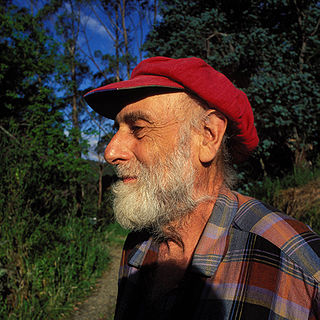
Friedrich Stowasser, better known by his pseudonym Friedensreich Regentag Dunkelbunt Hundertwasser, was an Austrian visual artist and architect who also worked in the field of environmental protection. He emigrated to the Far North of New Zealand in the 1970s, where he lived and worked for most of the rest of his life.

Saxe-Weimar-Eisenach was a German state, created as a duchy in 1809 by the merger of the Ernestine duchies of Saxe-Weimar and Saxe-Eisenach, which had been in personal union since 1741. It was raised to a grand duchy in 1815 by resolution of the Congress of Vienna. In 1903, it officially changed its name to the Grand Duchy of Saxony, but this name was rarely used. The grand duchy came to an end in the German Revolution of 1918–19 with the other monarchies of the German Empire. It was succeeded by the Free State of Saxe-Weimar-Eisenach, which was merged into the new Free State of Thuringia two years later.

Franz Schreker was an Austrian composer, conductor, librettist, teacher and administrator. Primarily a composer of operas, Schreker developed a style characterized by aesthetic plurality, timbral experimentation, strategies of extended tonality and conception of total music theatre into the narrative of 20th-century music.

Raimund Pretzel, better known by his pseudonym Sebastian Haffner, was a German journalist and historian. As an émigré in Britain during World War II, Haffner argued that accommodation was impossible not only with Adolf Hitler but also with the German Reich with which Hitler had gambled. Peace could be secured only by rolling back "seventy-five years of German history" and restoring Germany to a network of smaller states.

Kochel am See is a municipality and a town in the district of Bad Tölz-Wolfratshausen in Bavaria, on the shores of Kochelsee. The municipality consists of the Altjoch, Brunnenbach, Ort, Pessenbach, Pfisterberg, Walchensee and Ried districts.
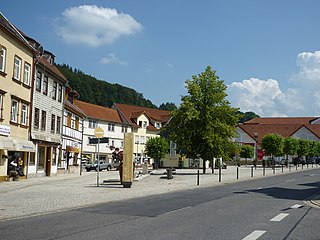
is a town situated in the forest of Thuringia in the district of Wartburgkreis in Germany, immediately next to the Rennsteig. Thal and Kittelsthal are parts of the town.

Greifenberg is a municipality in the district of Landsberg in Bavaria in Germany.
Kenneth Albert Schmied, a Republican, served as Mayor of Louisville, Kentucky from 1965 until 1969. He was the last Republican to have held the office.
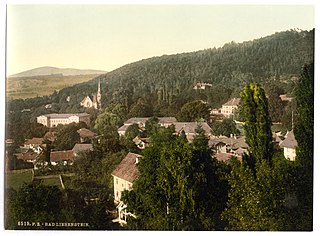
Bad Liebenstein is a municipality and spa town in Wartburgkreis district of Thuringia, Germany.
Albert Ellmenreich was a German actor, writer, dancer, singer and composer. He was born on 10 February 1816 in Karlsruhe, Germany, and died on 30 May 1905 in Lübeck.

Schmied is a surname of German origin. Its meaning is derived from the German word Schmied, which is a smith. Common variants are Schmidt, Schmitt, and Schmitz.

Ödön (Edmund) Péter József de Mihalovich was a Hungarian composer and music educator.

End of the Game is a 1975 DeLuxe Color German mystery thriller film directed by Maximilian Schell, and starring Jon Voight, Jacqueline Bisset, Martin Ritt and Robert Shaw. Co-written by Friedrich Dürrenmatt, the film is an adaptation of his 1950 crime novella The Judge and His Hangman. Dürrenmatt also appears in the film, while Donald Sutherland plays the role of the corpse of Schmied.
Wieland der Schmied is a draft by Richard Wagner for an opera libretto based on the Germanic legend of Wayland Smith. It is listed in the Wagner-Werk-Verzeichnis as WWV82.

Caspar David Friedrich in his Studio refers to two paintings by the German romantic artist Georg Friedrich Kersting dated 1811 and 1819. Of these the 1819 version, now in the Alte Nationalgalerie in Berlin, is the best known. In both Kersting depicted fellow German painter Caspar David Friedrich in his studio.

Man on Horseback is a 1969 West German drama film directed by Volker Schlöndorff based on the novel Michael Kohlhaas by Heinrich von Kleist. It was entered into the 1969 Cannes Film Festival. Another film based on the book was released at the 2013 Cannes Film Festival.

Friedrich Lux was a German conductor, composer and organist.
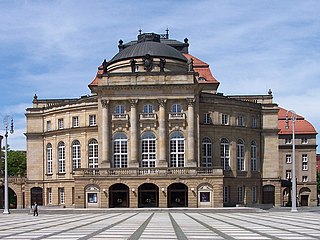
Frank Beermann is a German conductor. He was Generalmusikdirektor (GMD) at the Chemnitz Opera for several years, and has worked freelance at international opera houses from 2012. He has conducted premieres and recordings of rarely performed operas and orchestral works.
Der Schmied von Gent is a "Grand magical opera" in three acts by Franz Schreker with a German-language libretto by the composer after the story Smetse Smee by the Flemish author Charles de Coster.
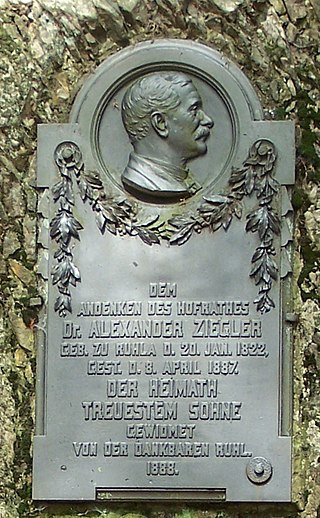
Alexander Ziegler was a German travel writer, economist and government councilor.
References
- ↑ Short, Michael (2003). Liszt Letters in the Library of Congress. Pendragon Press. p. 189.
- ↑ "Image 12 of Der Schmied von Ruhla : romantische Oper in drei Acten". Library of Congress. Retrieved 2025-02-03.